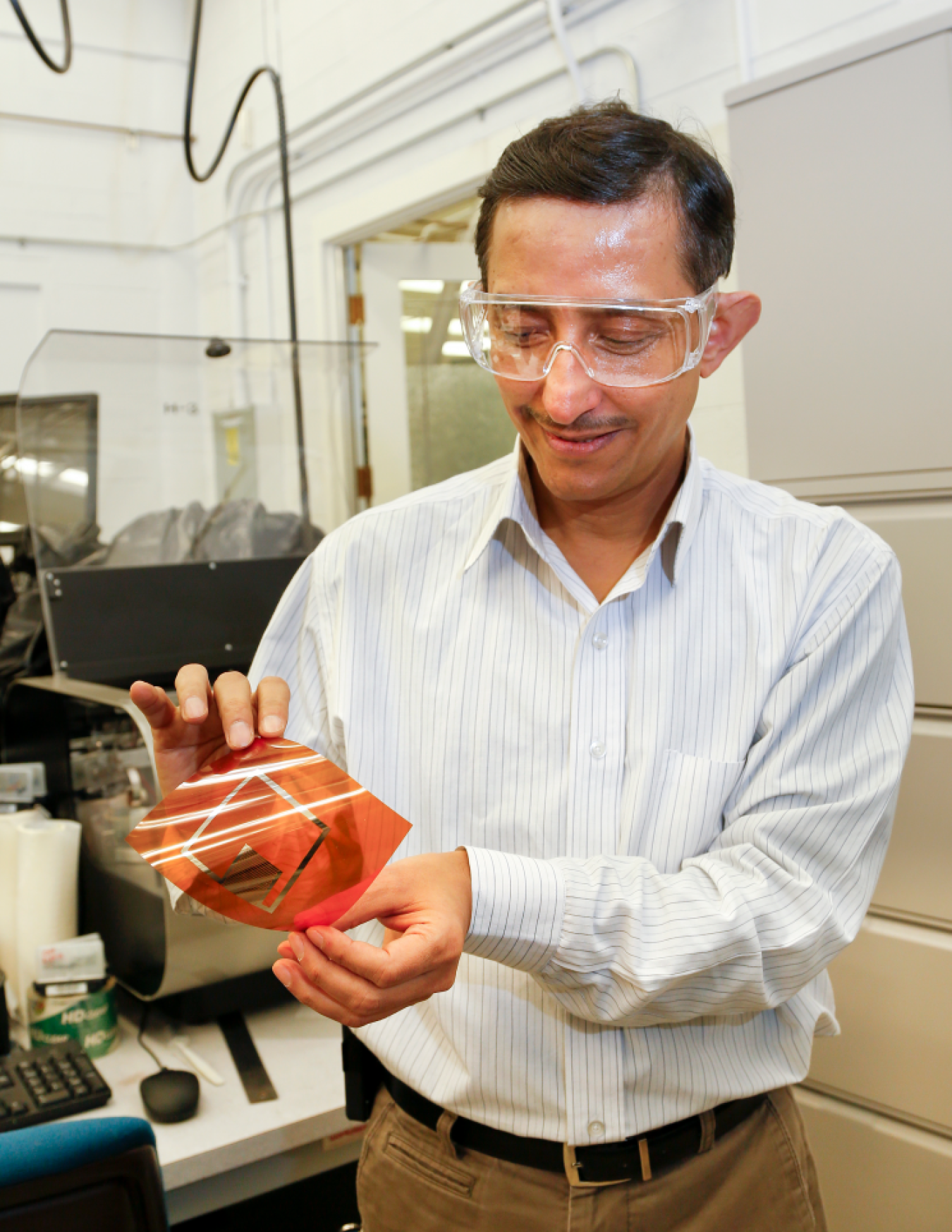
ORNL researchers are experimenting with additive roll-to-roll manufacturing techniques to develop low-cost wireless sensors. ORNL’s Pooran Joshi shows how the process enables electronics components to be printed on flexible plastic substrates.
Editor's Note: This article originally appeared on the Oak Ridge National Lab website.
Regulating comfort in small commercial buildings could become more efficient and less expensive thanks to an innovative low-cost wireless sensor technology being developed by researchers at the Department of Energy’s Oak Ridge National Laboratory.
Buildings are responsible for about 40 percent of the energy consumed in the United States. Studies indicate that advanced sensors and controls have the potential to reduce the energy consumption of buildings by 20-30 percent.
“It is widely accepted that energy-consuming systems such as heating, ventilating, and air conditioning (HVAC) units in buildings are under, or poorly, controlled causing them to waste energy,” said Patrick Hughes, director of ORNL’s Building Technologies Program. “Buildings could increase their energy efficiency if control systems had access to additional information.”
Collecting data such as outside air and room temperature, humidity, light level, occupancy and pollutants is currently cost prohibitive, whether the information is gathered by inexpensive conventional sensors that must be wired, or by using today’s expensive $150-300 per node wireless sensors.
ORNL’s new wireless sensor prototype could reduce costs to $1-10 per node by leveraging advanced manufacturing techniques such as additive roll-to-roll manufacturing. This process enables electronics components like circuits, sensors, antennae, and photovoltaic cells and batteries to be printed on flexible plastic substrates (base materials). The nodes can be installed without wires using a peel-and-stick adhesive backing.
“If commercially available at the target price point, there would be endless application possibilities where the installed cost to improve the control of energy-consuming systems would pay for itself through lower utility bills in only a few years,” Hughes said.
The ultra-low power smart sensors collect and send data to a receiver, which can capture data from many different peel-and-stick nodes and provide the information to the energy-consuming system. The more information received, the better the building’s energy management.
Both new construction and retrofitted buildings can benefit from ORNL’s smart sensors.
“This technology provides the information that enables ongoing continuous commissioning, fault detection and diagnosis, and service organization notifications when needed, ensuring optimal building system operations throughout their service life,” said ORNL’s Teja Kuruganti, principal investigator on the low-cost wireless sensors project.
ORNL is currently in negotiations to establish a cooperative research and development agreement with a premier international electronics manufacturer to make the low-cost wireless sensors commercially available.
Learn more about this project by viewing its BTO Project Page.
